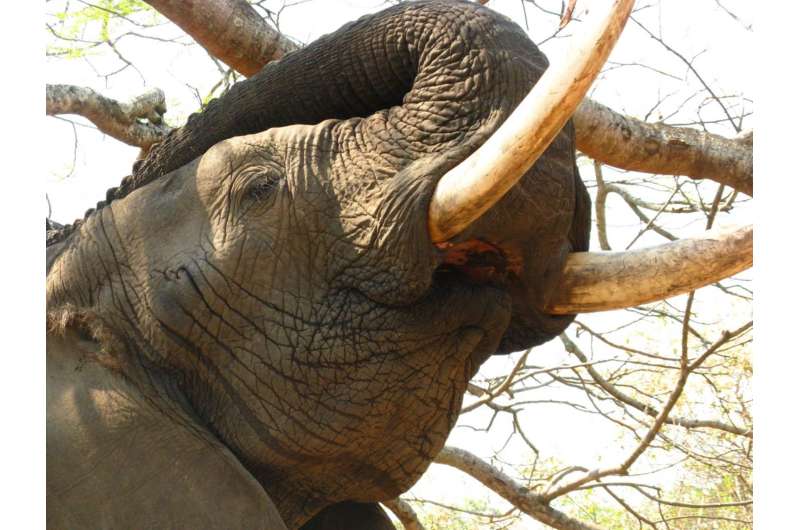Measuring impact of Kenya's ivory burning 'urgent'

Gathering evidence on the impact of Kenya's record-breaking ivory burn on elephant conservation should be an urgent priority according to four University of Queensland scientists.
Dr Duan Biggs from the ARC Centre of Excellence for Environmental Decisions (CEED) said the ivory burns and stockpile destruction had increased by more than 600 per cent since 2011, with Kenya burning a record-breaking 105 tons of ivory on 30 April, valued at up to US$220 million on the black market.
"The historic Kenyan burn aims to send a powerful message against elephant poaching and the illegal ivory trade, yet there is no evidence, so far, that these actions help reduce poaching," Dr Biggs said.
"More disturbingly, we are unaware of any attempts to track and evaluate the impacts of these burns on the demand for and the price of illegal ivory."
He said that destroying ivory stockpiles could create a perverse outcome.
"As ivory becomes rarer, the price increases, leading to greater incentives for elephant poachers and illegal stockpilers of ivory," he said.
Each year more than 30,000 elephants are killed for their ivory by poachers in Africa to satisfy demand in Asia where raw tusks sell for up to $2100 per kilogram. Africa is home to about 500,000 elephants.
Former Kenyan president Daniel Arap Moi began incinerating stockpiles of ivory in 1989 at the same time as the ban on the international trade in ivory came into effect.
CEED Director and co-author Professor Hugh Possingham said it was crucial to track the effects of Kenya's largest ever ivory burn with data on ivory price and demand.
"The way in which ivory burns affect the attitudes of potential buyers in the markets of East Asia should be assessed," Professor Possingham said.
"Time is short and the stakes are high."
Track the Impact of Kenya's Ivory Burn was published in Nature and was also authored by Dr Matthew Holden and Dr Alex Braczcowski.
More information: Duan Biggs, Elephant poaching: Track the impact of Kenya's ivory burn, Nature (2016). DOI: 10.1038/534179a
Journal information: Nature
Provided by University of Queensland



















